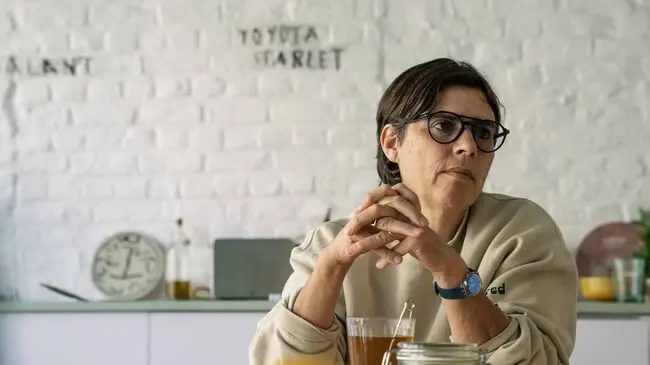I can poke at changes in meaning as I create new work

There is a lot to discover in the work of Michiel Ceulers. The Brussels-based artist and painter have an archive of 15 years to look back on, a sliver of which will be shown at his next solo exhibition at De Garage later this year. As he prepares for it, Michiel gives us a tour of his workspace, where we stumble upon two pieces featuring a canary, a familiar figure in his recent paintings.
What attracts you to the figure of the canary?
It’s pretty banal, isn’t it? I used the figure of the canary first during my studies and started working with it again during the lockdown. There were moments when everything could be going great, and suddenly a tiny, ominous voice in the back of your head caused the alert. As far as our cultural lives during the lockdown, it felt as if we threw a blanket over the canary in the coal mine in an effort to shut it up. While I was studying at the KASK, there was a lot of conversation about how the images of current political and social affairs informed the subject matter of a painting. Railing against this, I decided to pursue the idea of banality and explore abstraction. I considered abstraction to be politically dead at the time, which is good because this allowed me the space to do my work without having to justify it. In a similar sense, I found it interesting to return to banal representations during the lockdown.
I found it interesting to return to banal representations during the lockdown
Your last solo exhibition was in Los Angeles and was titled Scissor Valley People. What was the idea behind it?
For this exhibition, I invited friends who acted as my conversation partners during the lockdown to contribute work to the exhibition. The works displayed in the exhibition were not directly inspired by these conversations, but definitely acted as the backdrop for the creation of the works. I displayed quite a few works featuring mirrors, which is a reflection of my perception of the city of Los Angeles and the idea of the facade. Because of the sheer fact that you always have to travel by car in this city, you always know exactly where your final destination is. This means that the buildings you pass don’t advertise themselves to pedestrians as they do in Europe and as a result, you almost never know what’s around the corner wherever you are. Los Angeles is a city where you are almost always isolated.
I noticed that the way you title some of your work is quite tongue-in-cheek. What role does titling play in your work?
When you’re exhibiting, people will usually give your works a nickname, like the green with the red balls. Because this happens anyway, I find it interesting to provide people with a point of reference. The way I title works is a reflection of my own logic. My last exhibition in Brussels was titled A Condom over a Zeppelin, which is a reference to the show Absolutely Fabulous. For that exhibition, which was like a time capsule, I was inspired by images I saw of some people walking around with gloves on or even bottles on their heads during the early days of the pandemic. The titles of my work are also starting to come more into their own, which is interesting. For some exhibitions, I’ll make cardboard name cards for the titles that will hang next to the work, but lately, I also started printing vinyl texts and placing them on top of the work, almost as a parody of the museum context. This brings the focus back to the frame itself.
I also started printing vinyl texts and placing them on top of the work, almost as a parody of the museum context. This brings the focus back to the frame itself
Can you tell me more about the catalogue you are working on now?
I’m working on a catalogue that looks back on the last 15 years of my career as I prepare an exhibition about the same topic at De Garage in Mechelen. The exhibition will feature a combination of my older and more recent work. I’ve been working on this for a while, and it’s been a fascinating exercise to talk about the exhibition with other people and see it written about for the catalogue. The title of the exhibition is a reference to a song by Jacques Brel, ‘Comment tuer l'amant de sa femme quand on a été élevé comme moi dans la tradition.’ It touches on a number of themes that I wanted to explore, such as the idea of painting as the ‘grande dame’ of the arts, but also that of patricide and tradition, and questions related to the renewal of the art of painting.
Across your catalogue, it feels like you allow past and future paintings to inspire and be seeds of each other.
I like to play with the idea of repositioning older work through the creation of something new. Ultimately, I hold the cards and can poke at changes in meaning as I create new work.
Different Class works with the interest of their community at heart.
Our work’s purpose is to foster a solid network for independent artists, those who love them, and those who want to support them. Become a member to contribute to the local Belgian art scene.





